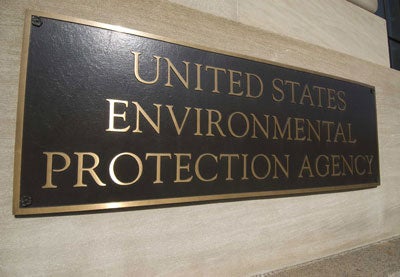The White House has stated that it will open its estimate of the social cost of carbon (SCC) for public comment. Administration officials who are responsible for this decision should be commended for recognizing the need to revisit this issue.
We at Heritage are proud to say that we contributed to this discussion. In particular, we closely examined the Environmental Protection Agency’s (EPA) statistical models for estimating SCC by rigorously examining their underlying assumptions as well as identifying a fundamental misspecification.
The SCC is used by some federal agencies to quantify the alleged economic impact of carbon dioxide emissions. To be clear, the models used to calculate the SCC are essentially useless, and any proposed and implemented policies and regulatory actions using the SCC are completely unjustified.
The EPA inserted the most recent version of the SCC into the policy world via a seemingly innocuous (though ultimately ridiculous) Department of Energy (DOE) rule governing the power consumption of microwave ovens when the ovens are not in use.
To estimate the SCC, the EPA uses three integrated assessment models (IAMs): the DICE model, the FUND model, and the PAGE model. These models, just like all other statistical models, are grounded on assumptions. It is incumbent upon policy researchers to rigorously examine the validity of, and resulting sensitivity due to, these assumptions.
Earlier this month, Heritage examined the DICE model’s assumptions and found that it has fundamental problems that make it unsuitable for use as a regulatory tool. Nonetheless, the EPA insists on using it anyway.
We re-estimated the SCC using the DICE model with more reasonable assumptions, and we found drastically different estimates of the SCC. A more comprehensive analysis of the DICE model will be forthcoming in next few days.
We’ve also begun to examine the FUND model. We noticed a discrepancy between the EPA’s description of the projected temperature distribution (equilibrium climate sensitivity) and actual distribution as input to the model.
Concerned about this discrepancy, we contacted the EPA several weeks ago. Last Friday, they got back to us, stating that the equilibrium climate sensitivity distribution was indeed misspecified. They have since corrected that mistake as well as another mistake in the model.
Although their corrected report rightly claims that this alters the overall SCC “by one dollar or less” (after averaging across the results from all three IAMs), side-by-side comparisons of the FUND model estimation results before this correction against their results after this correction indicate that the SCC estimates change by as much as 10 percent. We are in the process of examining the FUND model’s assumptions as thoroughly as we did with the DICE model.
There is no reason to think the misspecification in the EPA’s analysis was intentional or that it was an unprecedented or unconscionable error. In fact, the EPA modelers have been very open, collegial, and helpful. We have even used their models at Heritage.
Nonetheless, improperly specified models can mislead the public and misinform policymakers. A rigorous, public examination of such models helps inform everyone and leads to better decisions on potentially costly policies.




























